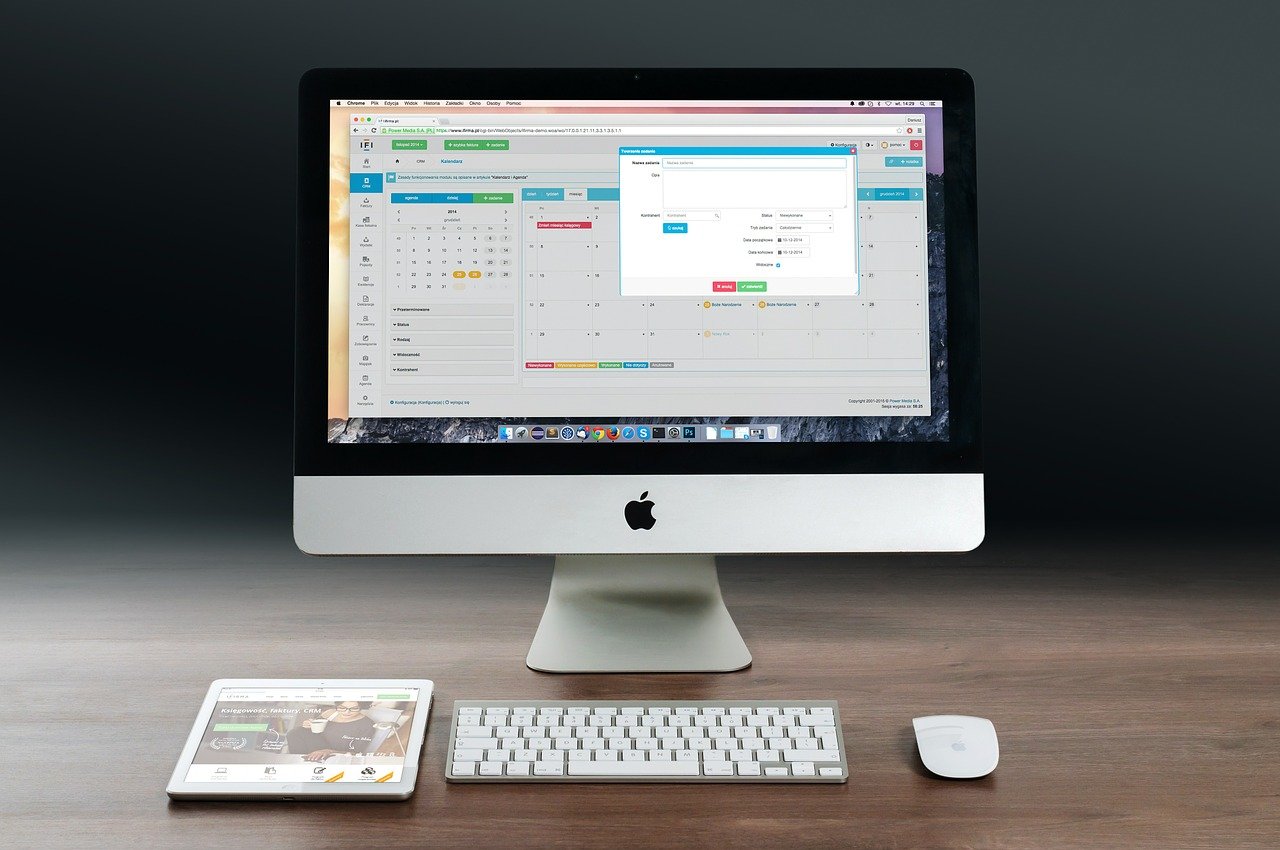Contents
Understanding SAAS Business Model [Complete Guide]
The SaaS model is considered to be one of the world’s best business models.
Selling services as a cloud-based subscription is an industry that has grown extremely rapidly in the last decade or so.
Software AS A Service – or Saas has revolutionized the industry considerably both in terms of delivery of software and the business model itself.
What was before a major and risky investment decision of a lot of money for many companies – perhaps a new billing tool that was installed on the company’s server, is today a cloud-based service and software that the company pay a monthly fee for, and can terminate at any time if they are not satisfied. Back in the day, companies made huge investments in buying software, and sometimes, they had to change the software for various reasons, or perhaps it was found simply not suitable to the company, resulting in huge losses of investments.
The SaaS model is one of the world’s best business models, both for the company running it, and the companies or individuals using it; CRM gets paid in advance, revenue is recurring and the business requires no capital. Every year 9 of 10 customers stay for next year without the CRM having to do basically anything.
A SAAS company is a company that offers software services in the cloud. These services are usually charged as a subscription service, for example on a monthly quarterly, or annual basis. Examples of SaaS companies are Adobe, Photoshop, and Lightroom.
Saas
The SaaS companies’ business model is built as a cloud service, which means that the companies offer software over the Internet rather than requiring the user to download and permanently buy the rights for software.
The SaaS companies’ business model is one of the more complex IT business models. It requires a lot of knowledge about the customers’ business processes, programming code, and cloud environments. Also, a user-friendly user interface is important to create good user-friendliness (User Experience).

Advantages and disadvantages of developing your own IT solutions internally
The advantage of developing your own software solutions is that you experience greater control since everything is handled internally in the organization. The big drawback is that you have to build a great expertise in an area that is probably quite far from the core business, and thus need to compete with other employers about developers, IT security specialists, and other sought after Tech competence (where the deficit under IT & Telecom companies’ report IT- The lack of skills will amount to 70,000 persons in 2024). And when the solution is completed, the continuous work of maintenance, user support begins and ensuring that GDPR and other regulations are complied with. Building own IT solutions internally risk, in other words, to be expensive and time-consuming in the long run. With that said, in most cases, it is not worth it to develop your own software rather than using a SaaS product, unless what you need doesn’t exist on the market.
The case may have been different when SaaS didn’t really exist and you had to buy complete softwares for a lot of money. In addition, developing your own software is something that takes away focus from what your business is actually doing. Using a SaaS product will instead allow you to focus on what it is that you do, not building software to support your business. With a safe partner who handles the needs of tech and digitization, your organization can put full focus on the core business.
Benefits and Disadvantages of Buying softwards
The advantage of buying software products – that you pay a clear and transparent one-time cost – can also be considered a disadvantage, depending on how you see it. Paying a large lump sum in the initial stage makes it difficult to assess whether you will get a positive ROI for your investment in the long run.
Another problem is the lack of flexibility. Since the software needs to be installed on specific devices (usually user job computers), it is not always available for those who, for example, work remotely or are on the go. To always have the latest version, you also need to install updates with uneven intervals; Something that needs to be done on all units and for all users.
More and more companies choose Saas
With this in mind, it is not strange that a rapidly growing number of organizations choose to use cloud-based subscription services instead of buying ready-made solutions or build their own. According to a report 2020 State of Saasops from US Bettercloud, 70% of the company apps used today are SaaS-based. This is a number that is expected to rise to 85% in 2025. Some areas where extra many companies have discovered the benefits of Saas are economy and accounting, e-commerce, and SaaS CRM system for corporate customers. There simply aren’t many benefits of traditional software as opposed to SaaS alternatives anymore.

Benefits of SaaS business model
The two biggest benefits of SaaS companies are that they are scalable and available. These subscription services also give SaaS companies very stable revenue flows with high margins. Previously, it was less common with recurring customers, as the customers themselves could choose whether they wanted to update the program or not.
Saas also gives companies great flexibility. For example, the use of the service can be easily scaled up or down by a customer depending on the staff turnover. If the company reduces the number of employees, the company would simply terminate the subscription for the employee. Likewise, if new employees are added, the subscription can be expanded. This gives companies lower investment costs and better adaptation to the current reality.
It also saves customers from IT problems. Because the customers themselves do not need to buy, install or maintain any hardware. The companies do not need to worry a lot about issues with the software. In addition, the Saas company is the one that takes care of the software and making sure it is functioning properly.
Even more accessible customer support is common with SaaS companies. Customers who use SaaS services can easily contact the company that owns the service they subscribe to in order to get assistance.
Fast to get started
One of the key benefits of SaaS products is that they make it easy and fast to get started. With SaaS, you don’t have to install any software and can therefore get started right away.
Cost-effective
With a SaaS product, you avoid the high initial costs that occur when you buy the software. Instead of buying the software outright, you pay a fee per user where the number can easily be peeled up or down based on changing needs. You also do not have the costs of managing operation, maintenance, and support internally.
Easily accessible
Since SaaS does not require any installation on specific devices, all you need is a device and an internet connection in order to access the software anytime and anywhere. Many SaaS platforms are also available as mobile app for better functionality via smartphone.

Not time-limited
A great thing about cloud-based software is that any updates or improvements are done automatically via the cloud. You won’t be sitting with an outdated program that you have bought after a few years. The provider takes care of all the updates and keeping the program up-to-date.
With a SaaS solution, you get to take part in all upgrades continuously so that you always have the latest version.
Safe
Some hesitate to choose Saas because they experience lost control over their user data. At the same time, it is far from all companies that have sufficiently high data security internally. In other words, some companies may actually get higher security with SaaS than when storing the information internally.
To protect customers and employees’ tasks according to GDPR, it is important to choose a SaaS provider that meets the highest possible safety standards in information security and data protection.
Saas is flexible and tailor-made
A SaaS solution makes it easy to scale up and down depending on the user’s needs. Depending on the company, there is also sometimes great flexibility in the design of the service itself. Many Saas companies offer the ability to adapt the functionality based on the needs and preferences of each business.
SaaS can often be integrated with existing systems
A great benefit of many SaaS products is that they can often be integrated with your existing systems. But with that said, when you choose SaaS provider, you need to ensure that the solution enables the use of APIs so that data can easily be shared between the SAAS platform and other systems – if you need to integrate it.
Risks with the SaaS business model
A disadvantage that can occur with SaaS is the security. When the customer does not have the program installed, the SaaS company is responsible for all of the security. This can also become an integrity issue when all data is saved with their server. If the company is within the EU, it is required to comply with the new GDPR Regulation.
From a long-term perspective, it can be more expensive to subscribe to software than to buy. This all depends on how the use and time aspect looks. But as discussed, there is much more uncertainty with large upfront costs than smaller monthly fees. In addition, not all companies have the possibility of investing large sums of money into software, and fewer companies are willing to take the shot.
Bankruptcy for the SaaS company is always a risk. In this case, it is possible that the software you are using disappears and you need to change. Within a company, this can lead to new staff routines. However, as a private person, you are more flexible.
The SaaS companies can release updates that users are forced to use even though they prefer the older versions.
How SaaS changes the way we work
The SaaS model is offered today in many different areas. Therefore, it affects the working methods in many different ways.
In 2017, BetterCloud made an investigation to get a deeper understanding of this new workplace, where Saas applications serve as the spine in productivity. The data revealed amazing results.
We become more mobile both as individuals and companies. Since everything is stored in the cloud, it is usually accessed via other devices, such as mobile or tablets.

Common SaaS solutions
An example of a SaaS solution is CRM software (Customer, Relationship, Management). This is software that retrieves information from all departments of the company and gives an overall idea of the customers in real-time. This can improve everything from sales to the quality of customer communication.
Accounting systems and pay systems are two other common areas that many companies today use a SaaS services.
Even video and image editing programs are two common SaaS services. Here, for example, Adobe is a popular company that provides Adobe Creative Cloud. Here, we find highly popular programs such as Photoshop, Illustrator, and Premiere.
Mobile applications are also a form of SaaS service. Here, chat applications are counted. Such as WhatsApp and Instagram. The list goes on and on.
This just goes to show the growth rate in a SaaS company and how many of the digital services we use today are Saas-based.
Saas companies can make money in different ways, but the main source is recurring subscription payments. When SaaS companies have a completely different form of a business model than traditional product and service companies, the valuation takes place in another way. The reason is for the most often required mass reinvestments to grow a SaaS company.
Growth Strategies for SaaS companies
There are different approaches to growing a SaaS company. Their growth strategy depends on the company’s core competencies. Some approaches that SaaS companies use to develop their company are by introducing new marketing channels, working with Upsells, optimizing the software, increasing their organic traffic, and adding a partner program.
Valuation key figures for SaaS companies
To value a SAAS company, you can use the formula PMF / time for onboarding. Through this, the company’s growth rate is presented. But what do these concepts mean?
PFM stands for the product Market Fit. Thus how good the product matches the customer’s needs.
Time for onboarding values how long time it takes for the customer to start using the product that the SaaS company offers.
Previously, projects sold to a customer and disappeared shortly after. Today, you sell to build long-term relationships with their customers. Long-term customer relationships involve high predictability. And high predictability creates lower risk. And low risk attracts investors. This gives a more secure revenue stream and a more effective way of scaling the business.
Knowing that you have 100 customers for at least one year, for example, creates stability. Therefore, the risk is lower in Saas companies than in, for example, a restaurant chain or consulting company that always depends on new customers. And when predictability goes up, it becomes easier to make smart investment decisions. It’s no coincidence that investors like these companies.
But even though SaaS companies grow at a substantial rate, and the industry is exploding, there are, of course, also challenges.
Do you have a long sales funnel?
If your product is complex, you probably have a long sales funnel. With this in mind, your pricing should be set accordingly. It is important to find a balance between the sales cycle and pricing to then be able to scale up fast.
Have low pricing with short sales funnels
If your product has a short sales funnel, it is most appropriate to price your product low and increase it over time. You can motivate the price increases by the fact that you continuously upgrade and improve your product.
Don’t have long trial periods
If the customer does not choose your product in two weeks, they will likely not subscribe to it in two months. In most cases, it is not necessary to have long trial periods. Your service must show how it delivers value directly, otherwise the customer will not extend or buy it anyway. It is normally better to have short trials so you can quickly get feedback and see if they saw the value in your product.

Focus on selling and customer acquisitions
Because Saas customers often have a high retention rate, it is a good idea to invest a lot of resources in marketing and customer acquisitions. This is actually one of the most important aspects of a Saas business (apart from having a great product of course). Because with every customer you acquire, you continue to build on your existing customer base and grow it larger and larger.
Make your product simple and easy to use
Saas is more like renting programs than a purchase. Traditionally, the program was purchased which was then installed on the user’s computer and was run towards a server locally.






